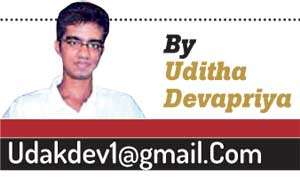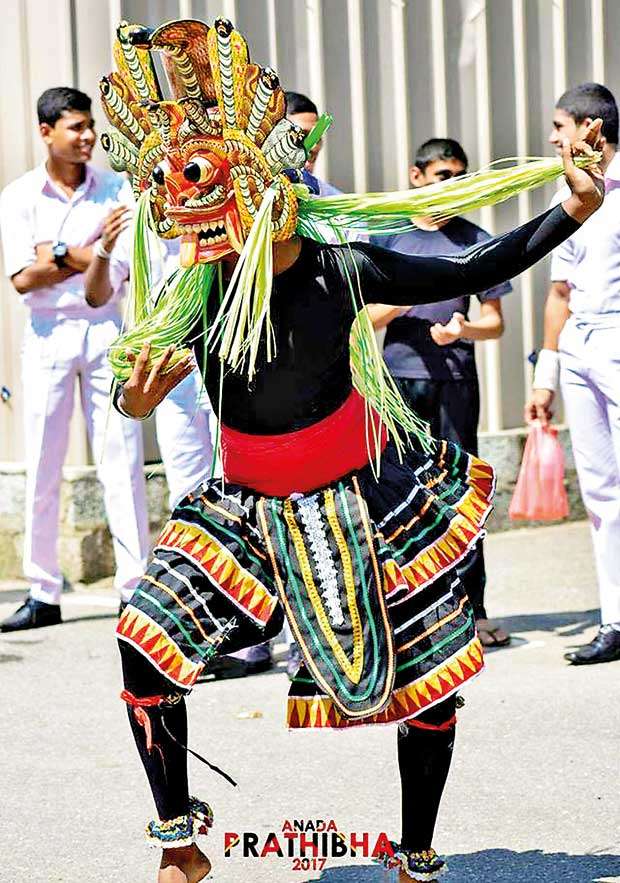26 Dec 2018 - {{hitsCtrl.values.hits}}
I confess, I can’t dance. I know of dance and its evolution, of course. But there have been times when I’ve wished that I could perform, compose, sing, play a drum or two, and dance, even at the cost of writing (which to be fair is an art in itself too). Besides, there is something ineffable and deeply mystifying about dancing. With its fusion of movement and stillness, precision and improvisation, synchronisation and autonomy, it aspires to break away from tradition while genuflecting to it.
fusion of movement and stillness, precision and improvisation, synchronisation and autonomy, it aspires to break away from tradition while genuflecting to it.
The bedrock of traditional dance is the ves natuma, and it stems from the daha ata vannam. It was and it still remains a form of communication with the gods. Classical in the truest sense of that term, it survived colonial rule, was patronised by British officials and locals alike, and proved to be so resilient that today, it happens to be the most dominant form of dance here. The pahatha rata natuma was driven by a need to propitiate gods and demons, while the most overlooked form, the Sabaragamuwa natuma, was in part at least nourished by the other two traditions.
With the changing times these dance forms have evolved to accommodate shifts in the cultural landscape. It has shifted to the bohemians and the radical artists of today, so much so that you come across dance items performed to, for instance, the accompaniment of rock music. Just as Martha Graham borrowed from classical ballet and transformed it to suit the mood of the Americans (who wanted a style they could call their own), our dancers, even the most conservative of them, have emphasised on the need to combine tradition with modernity. Dancing continues to flourish in the village where it belongs, to be sure, but it has come to the city as well. To a considerable extent, that has to do with the schoolchild.
The Dancing Circle of Ananda College has a history going back to 2002. It is probably not the oldest such club in the country, but it is the oldest such club in the city. Its annual showcase item, “Anada Prathibha”, is to unveil this Friday (December 28th) at the BMICH commencing at 5.30 p.m. I can write on the people who are organising it and on the people who are to perform at it. But that doesn’t really interest me. What interests me is the way dancing has found its way to a part of the country that is at once hostile to and receptive of the past and all that it represents.
Pabasara Samodana, Secretary of the Dancing Circle, told me that both the club and event began as a response to a need to promote dancing in city schools. “We unveiled a ves mangalya that year. Schools have been sponsoring the initiation ceremony for students for years, but this mangalya was different. Because of it there was an interest in traditional dance. We took advantage of that and formed a society.” said Pabasara.
The first Prathibha, he tells me, was held at the Tower Hall theatre, and held as three shows: one for normal ticketholders, one for students (free of charge), and one for parents and well wishers of the performers. The reaction was apparently positive. “City schools hadn’t seen this kind of show. School shows in Colombo were limited to the concert and the play at the time. A show for dances, drums, and masks simply did not exist.” Audiences were, given this lacuna, thrilled.
From then on Prathibha flourished: “We held the second show at the Kularatne Hall. We always targeted a small venue. That was because while people were enthusiastic about it, it didn’t get the massive crowds we usually got with a concert or play.,” said Pabasara.This year marks the 9th time Anada Prathibha will be held. The “format” as such has changed very little from previous installments, but this time around there will be new items. In a broad sense, each item has been catered for a specific audience.
“It’s a mixture of traditional and Western dancing. We will begin, as always, with a pooja natuma. This year’s natuma will revolve around Ravana. Then we’ll have a medley of items performed by primary students. Then there will be a mudra natuma based on a Hindu religious folk tale that’s become part of our culture. Next there will be a showcase item for our ves muhunu. Interweaving all this will be a vannama, as is always the case in a show like this. A chain of contemporary popular songs will be followed by a Karnatic dance item and a drum medley by the former president of the Circle, Chanuka Moragoda, and his drum troupe the Yaka Crew.” said Pabasara.
I have two questions for these boys. Firstly, how can dance subsist at a time when belief systems are eroding among the young, and secondly, how can our dance forms flourish when only one of them, the udarata sampradaya, is taught with any kind of sustained interest?
Regarding the first question, Pabasara had an interesting point to make. In the most rudimentary sense (as I pointed out before) traditional dance is an act of appeasement for “the gods” and an act of genuflection to the Budun-Daham-Sandun trinity. In that sense, it is both religious and cultural. In any case, Pabasara points out that no matter how sophisticated and learned he may be, the student must inculcate within himself (or herself) a sense of awe towards the divine: “You cannot dance without respecting the divine, and you cannot respect the divine if you do not believe in it.
“The ves mangalya is the root of the udarata natum, and it originates from the kohomba kankariya, which is patently mythical and based on legend. If you cast that aside and concentrate on the outward elements of a dance item, you will not evolve as a dancer or for that matter an artist.” said Prabasara.

30 Nov 2024 3 hours ago
30 Nov 2024 4 hours ago
30 Nov 2024 7 hours ago
30 Nov 2024 9 hours ago
30 Nov 2024 30 Nov 2024